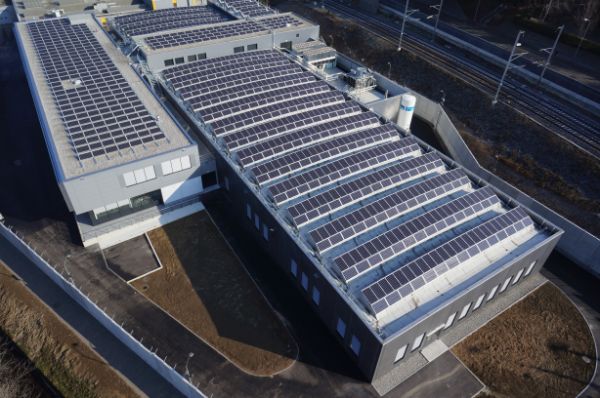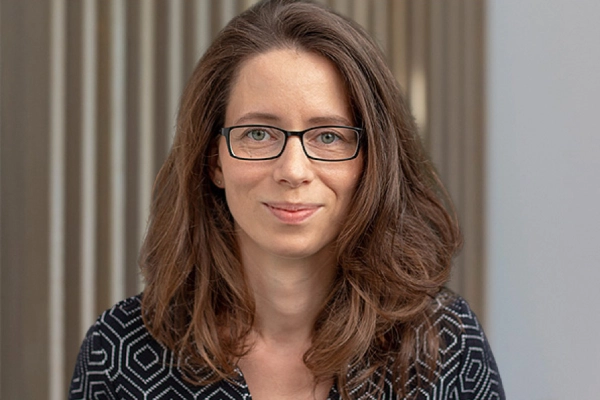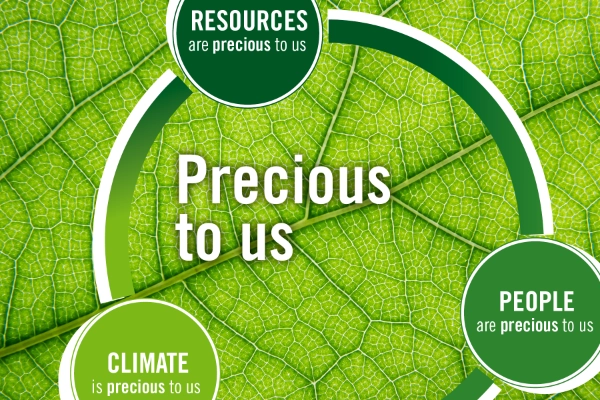They can be found in smartphones, computers, cars and medical devices: without precious metals, many modern technologies and innovations would not exist today. But the extraction and processing of these metals is energy-intensive and usually causes considerable CO2 emissions. We at Heraeus Precious Metals are very aware of this fact. As one of the leading precious metals refiner and recycler, we consider it a matter of course to make our contribution to preserving the environment.
We see it as our responsibility to do our part to combat climate change. That is why we have set ourselves the goal of being carbon neutral for our own business activities by 2025. To achieve this, we will reduce our energy consumption by 20% compared to 2019 and switch to 100% green electricity at all locations worldwide. We will only offset the remaining emissions. From 2033, we want to completely eliminate the use of fossil fuels.
An important lever in this energy transition is the conversion of production processes to green electricity, some of which is generated in-house through PV systems on the production buildings. Electricity is a major driver of emissions: in 2019, more than half of our own carbon footprint worldwide resulted from acquired electricity. For this reason, all locations are to use 100% green electricity by the end of 2025.
Oil and natural gas are finite resources and will be exhausted at some point. Consequently, the need to find alternatives is now. And they are already here: in Germany alone, almost 61 terawatt hours (TWh) of electricity were generated with solar panels in 2023. This corresponds to around 11 per cent of gross electricity consumption.1 However, due to many sustainable innovations such as electric vehicles, electricity-based heating systems and electrified industrial processes, the demand for electricity is increasing significantly. At Heraeus Precious Metals, we also see that our demand for electricity will continue to grow in the coming years: both our business growth and the conversion of some of our natural gas-powered plants to electricity and the decarbonization that this has initiated are driving this development.

Our path
By 2025, we want to source 100% of our electricity requirements from green electricity. To achieve this goal, we are focusing on the following measures:
- We are investing in our own PV systems at our locations worldwide. These are expected to cover 10 to 15% of our global electricity requirements by 2025. To this end, we have not only analyzed suitable roof areas on our factory premises, but also in the immediate vicinity. The individual requirements and conditions at the various locations were taken into account during the planning process.
- We prioritize the procurement of green electricity generated in the regions where our sites are located and thus specifically promote the development of additional plants for the generation of renewable electricity. For example, we signed a long-term purchase agreements for green electricity in Germany - known as Power Purchase Agreements (PPAs). As part of this PPA with Next Energy new PV systems with a total output of 40 MWp are being built. From 2025, this will provide us with around 40 gigawatt hours of solar power per year.
- We cover our remaining electricity requirements with high-quality green electricity certificates.

Selected photovoltaic projects at our locations
We have already achieved great success through the wide range of green electricity activities at our sites around the world. In Gqeberha, South Africa, a large PV system has been in operation since 2017. It is currently being rebuilt, expanded and equipped with battery infrastructure. It will produce four times as much electricity as before expected from May 2024 on. In 2025, the site will cover almost 80 % of its own electricity requirements with PV modules.

Our production site in Mendrisio, Switzerland, also shows that we have been focusing on the use of renewable energy for many years. The first PV system was installed here back in 2012. As PV modules have become significantly more efficient since then, we expanded our local capacities in 2022.
In China, the two photovoltaic systems at the Nanjing and Shanghai sites already generated over 1.4 gigawatt hours of electricity in 2023. In 2025, the site in Shanghai will cover around 10% of its electricity requirements with PV systems, while the site in Nanjing will cover around 20%.
Seven roofs at our headquarters in Hanau also already have photovoltaic systems. More are to be put into operation by the first half of 2024. Plans include solar carports and solar modules on the canteen, the multi-story car park, other production buildings and the Heraeus Family Centre. There are also plans to commission another PV system on an adjacent open space by the beginning of 2025. From 2025, around 4.3 gigawatt hours of green electricity will be produced annually - this corresponds to almost 15% of our local electricity requirements.

We also have PV systems in operation in Izmir (Turkey), Shannon (Ireland), Hong Kong (China) and at our joint venture in Udaipur (India). Further plants will be added at our Santa Fe Springs and Wartburg (US) sites in 2024.
We want to make our contribution to climate protection. Through the consistent use of renewable energy sources - in particular solar modules at our production sites - we are well on the way to achieving our CO2 neutrality targets. In doing so, we not only want to play a pioneering role in our industry, but also shape the transition to a sustainable precious metals industry.


